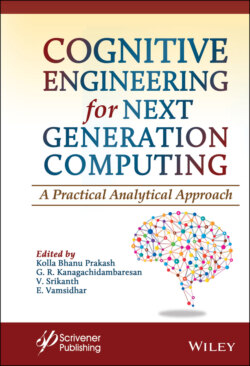Читать книгу Cognitive Engineering for Next Generation Computing - Группа авторов - Страница 32
1.8 Machine Learning
ОглавлениеMachine learning is the logical control that rose out of the general field of Artificial Intelligence. It is an interdisciplinary field where insights and information speculations are applied to discover the connections among the information and to build up programs by adapting consequently without human intercession. This procedure looks like the human learning process. Analysts are as yet attempting to make machines smart and act like people. This learning procedure begins with accessible information. Information assumes an essential job in the machine learning process. ML is also being utilized for information examination, such as identifying regularities in the information by fittingly managing incomplete information and the transformation of constant information.
Machine learning is multidisciplinary and is a subset of AI. However, it additionally consolidates the methods from statistics, control hypothesis, Cognitive Science as shown in Figure 1.8. The subsequent explanation is the exponential development of both accessible information and computer processing power. The order of AI additionally joins other information investigation disciplines like data mining, probability and statistics, computational complexity theory, Neurobiology, philosophy, and Information theory.
Figure 1.8 Machine learning.
Cognitive computing models use machine learning techniques dependent on inferential insights to identify or find designs that direct their behavioral patterns. Picking the fundamental learning way to deal with model recognition versus disclosure of examples ought to be founded on the available information and nature of the issues to be unraveled. AI regularly utilizes inferential insights (the reason for prescient, instead of precise examination) methods.
One of the more important uses of AI is to mechanize the procurement of information bases utilized by supposed master frameworks, which plans to imitate the dynamic procedure of human aptitude in a field. Be that as it may, the extent of its application has been developing.
The significant methodologies incorporate utilizing neural systems, case-based learning, hereditary calculations, rule enlistment, and analytical learning. While in the past they were applied autonomously, as of late these ideal models or models are being utilized in a crossbreed design, shutting the limits among them and empowering the improvement of increasingly compelling models. The blend of analytical techniques can guarantee compelling and repeatable and reliable outcomes, a necessary part for practical use in standard business and industry arrangements.
